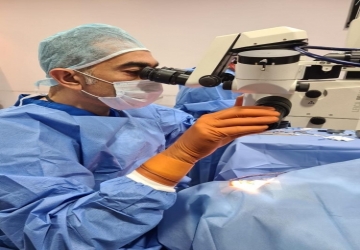
What is the femto-Lasik process?
The femtolasek vision correction process is the newest technique currently in the field of laser eye surgeries, and femto-LASIK relies on removing a thin layer of the corneal surface using a femtolizer, then reshaping the cornea again to correct any refractive errors in it using an excimer laser.
Femto-Lasik is used in the treatment of short-sightedness, hyperopia and astigmatism.
Advantages of femto-Lasik
With the question of Dr. Muhammad Hantira _ Honorary Assistant Professor _ Umm Al-Qura University _ Saudi Arabia, he explained to us the most important advantages of the femto-lasik process, including:
• The possibility of LASIK in cases of thin corneas for which regular LASIK cannot be done.
• The possibility of correcting vision defects to a greater degree.
• Obtaining better biomechanical corneas.
• The speed of recovery after LASIK.
• Older road problems are avoided, increasing the safety of the process to an unprecedented degree.
• Outstanding quality of vision after LASIK.
Who can undergo femto-LASIK?
Dr. Hantira explained:
Femto-LASIK is suitable for most of the cases that regular LASIK is suitable for, but it is distinguished by that it is suitable for some cases in which regular LASIK is not suitable due to the weak thickness of the cornea or its excessive curvature, which may lead to problems when using the traditional methods of LASIK.
How is the femto-LASIK process performed?
Dr. Hanatera told us about the simplicity of the operation steps, as he explained to us.
• It is performed under local anesthesia by placing anesthetic drops inside the eye.
• The eyelids are held apart using a flexible tool.
• With a femtolizer, the outer surface of the cornea is lifted with great precision to create a so-called fold.
• Excimer laser reshapes the corneal surface with pinpoint precision to correct the refractive error that causes nearsightedness, farsightedness, or astigmatism.
• The laser device tracks eye movement accurately during the procedure
The operation takes place in a short period of time that does not exceed 10 minutes and does not require a hospital stay.